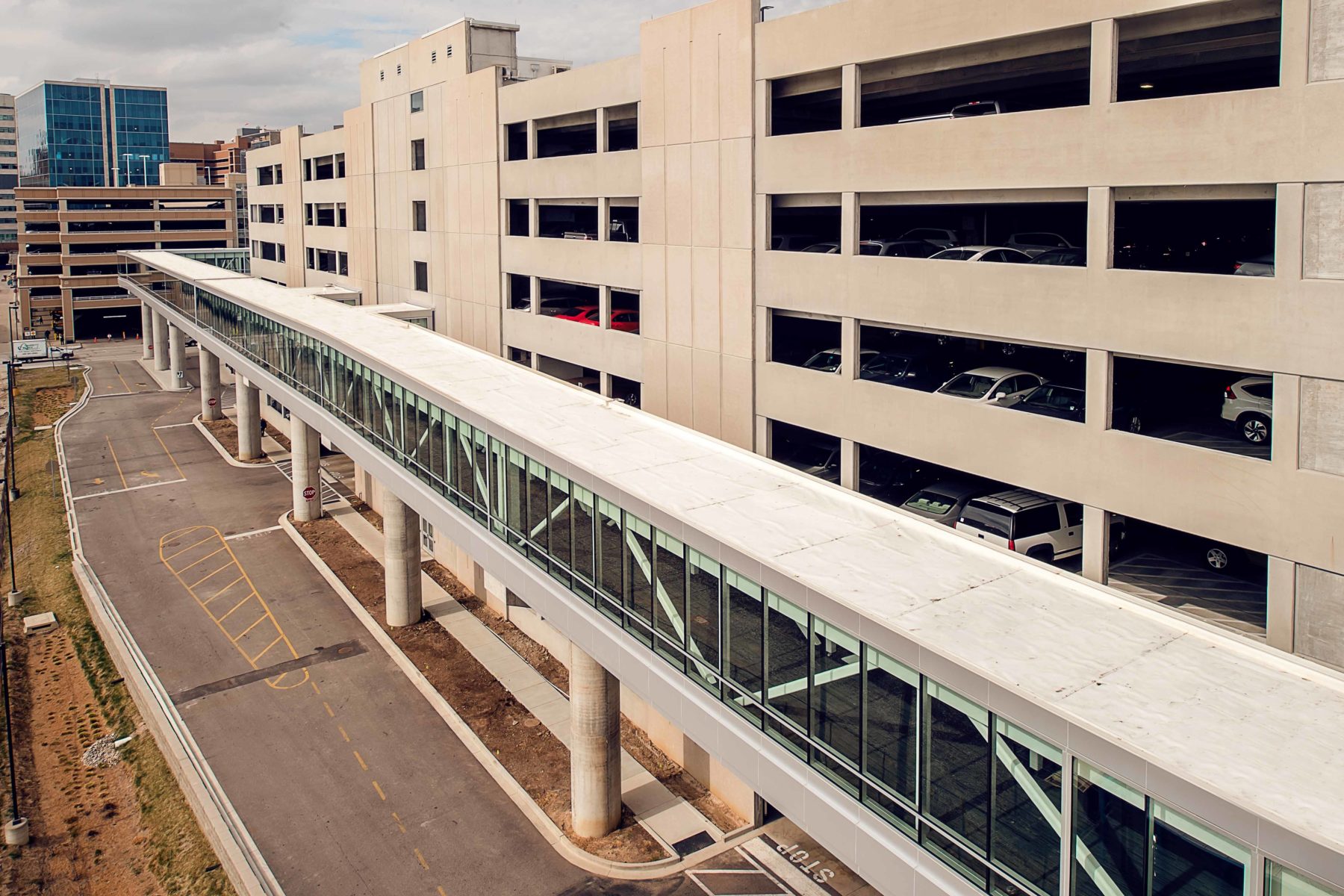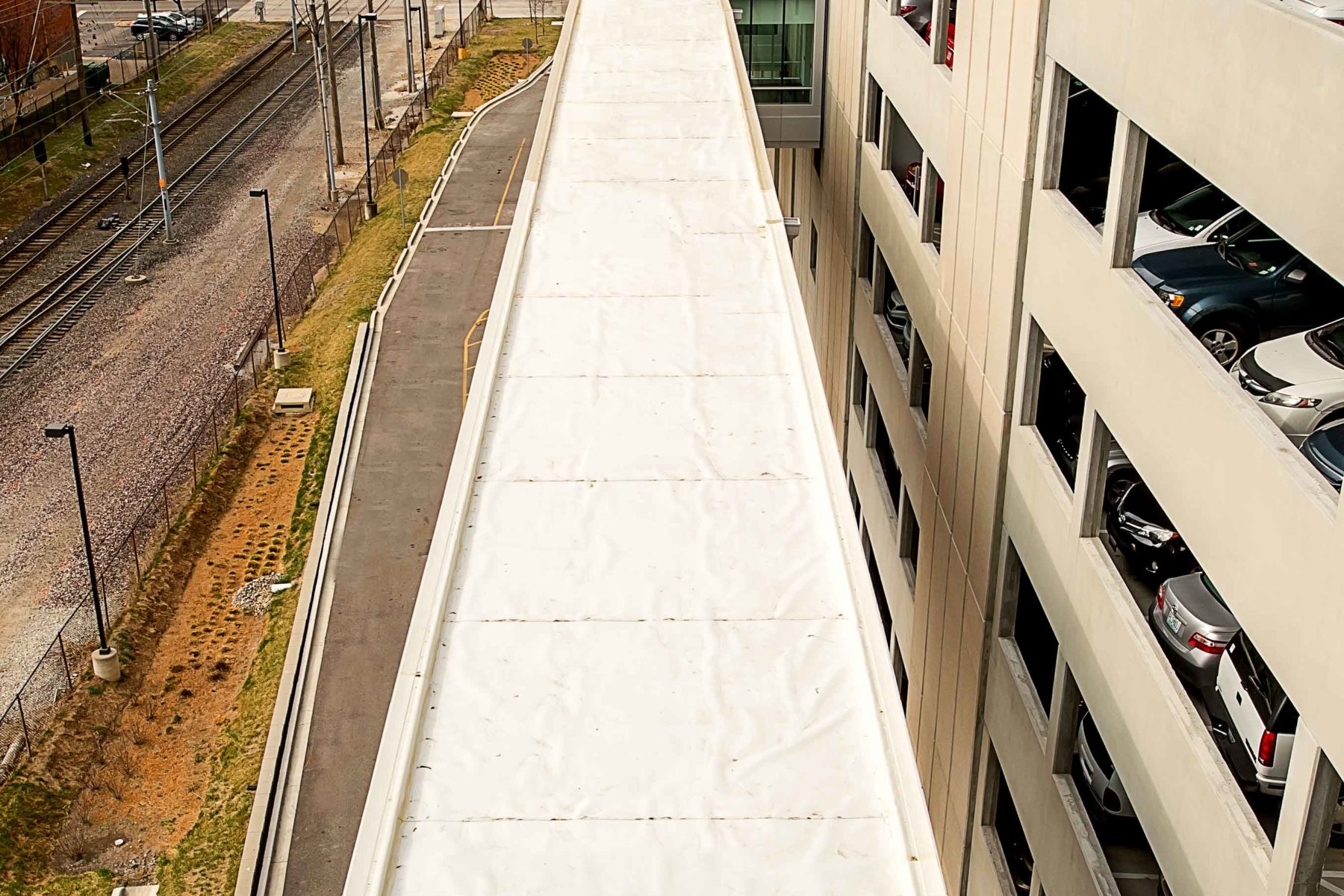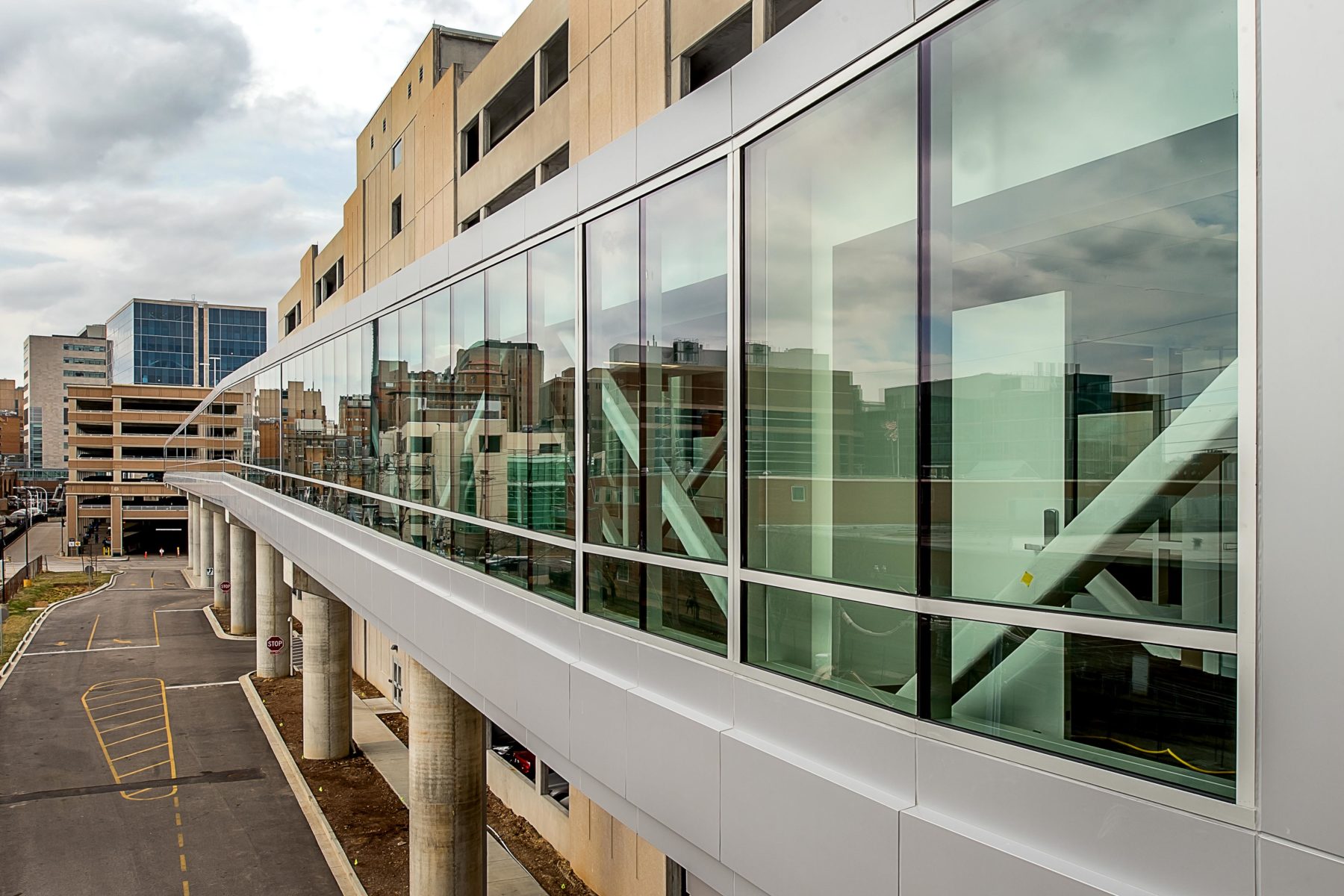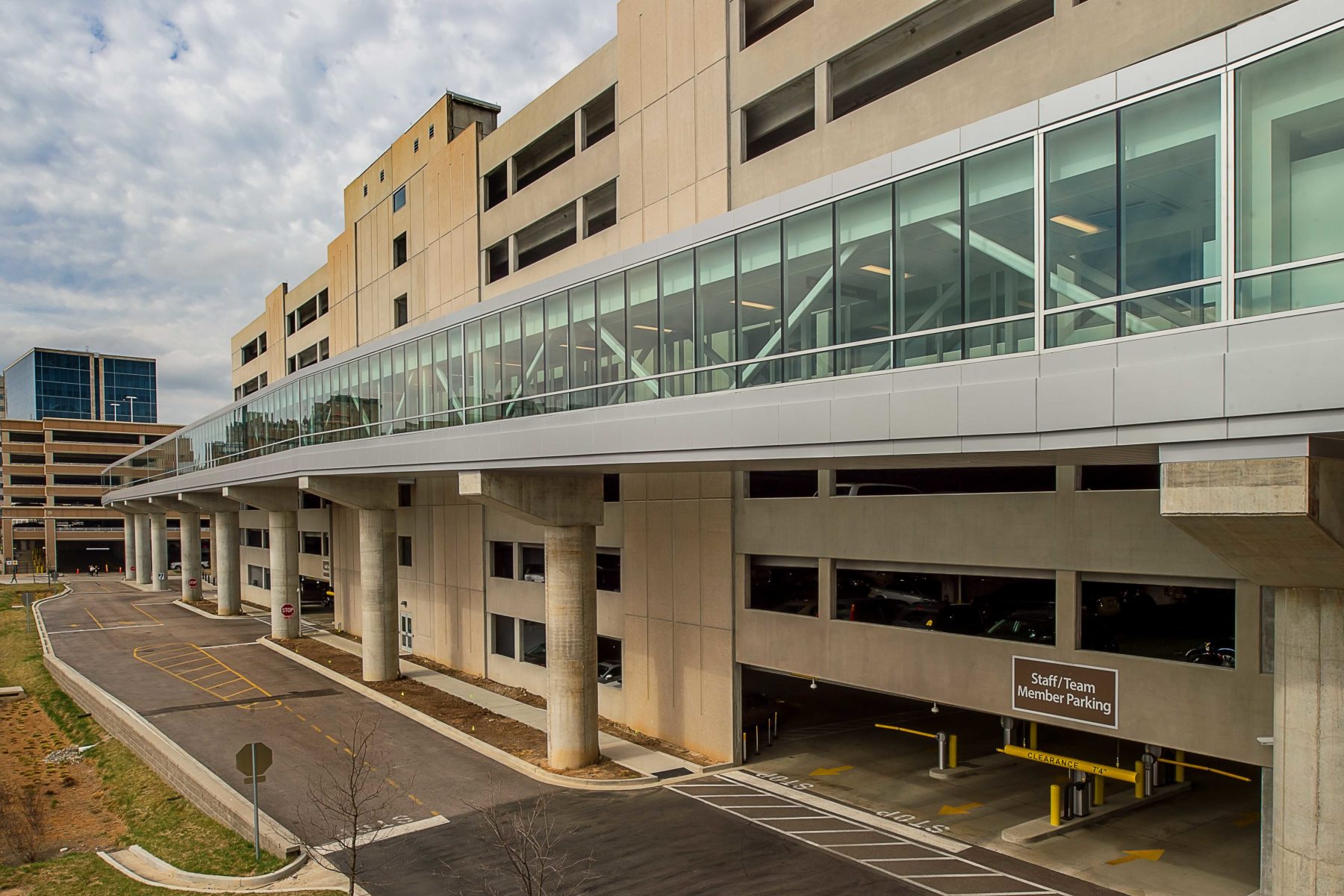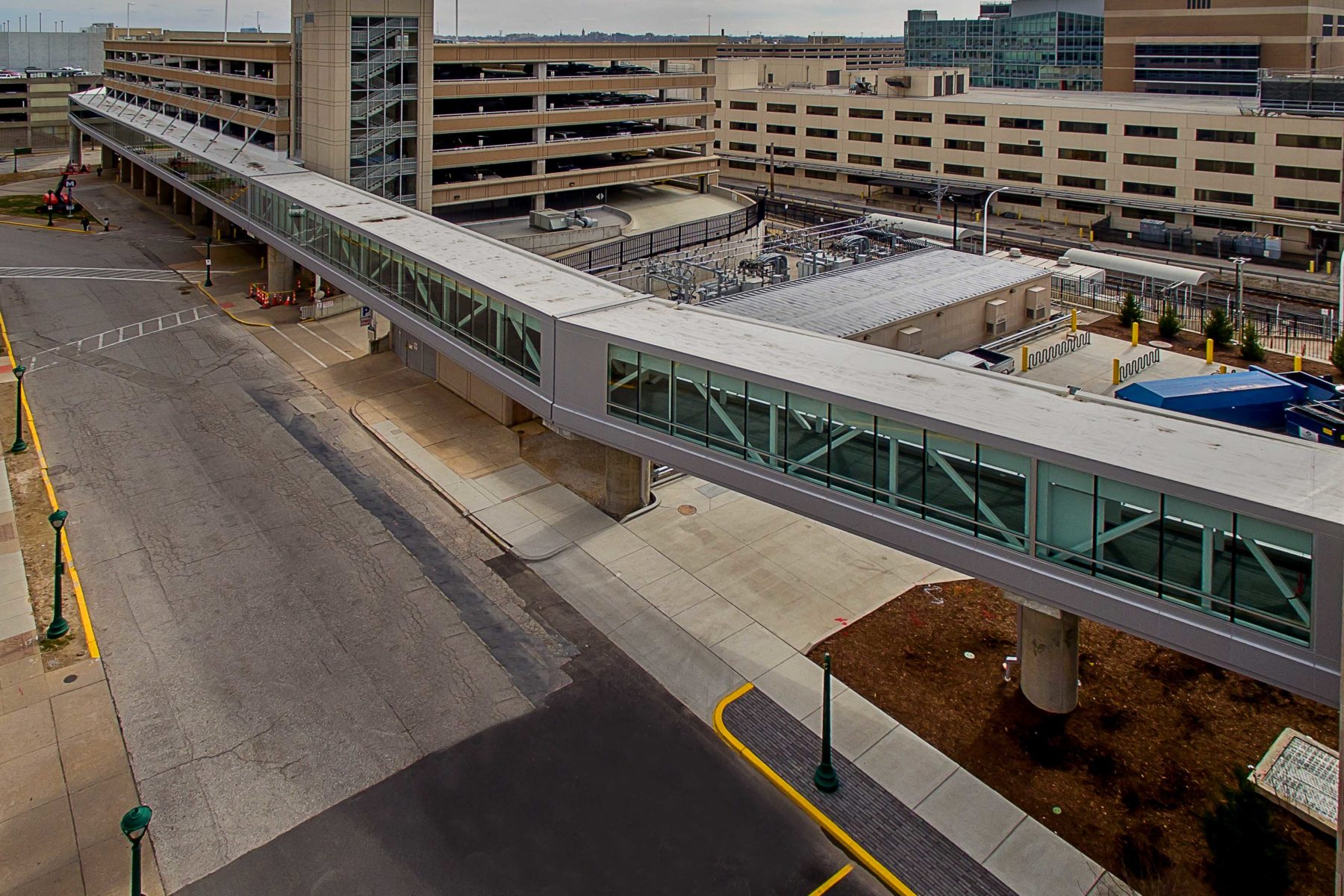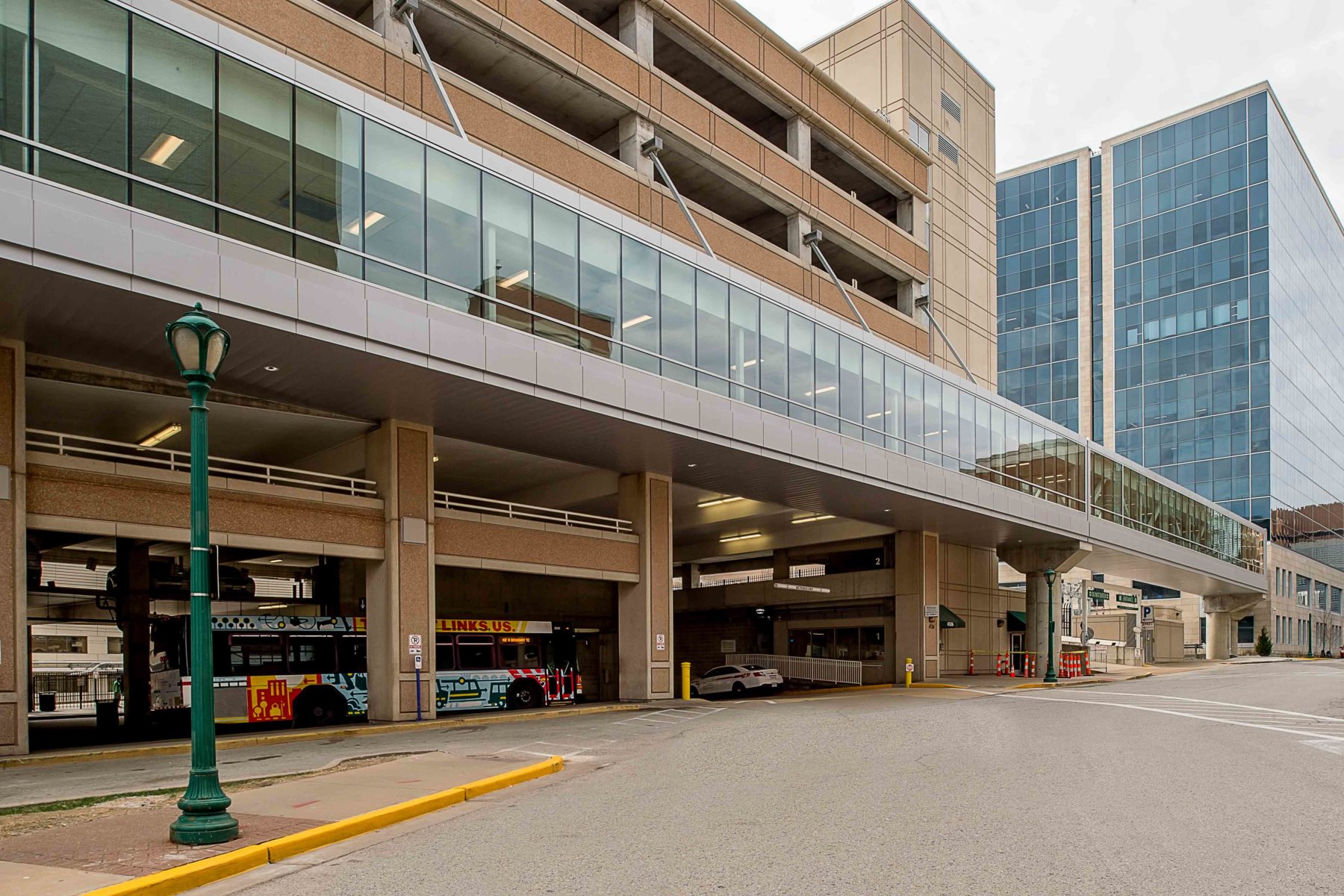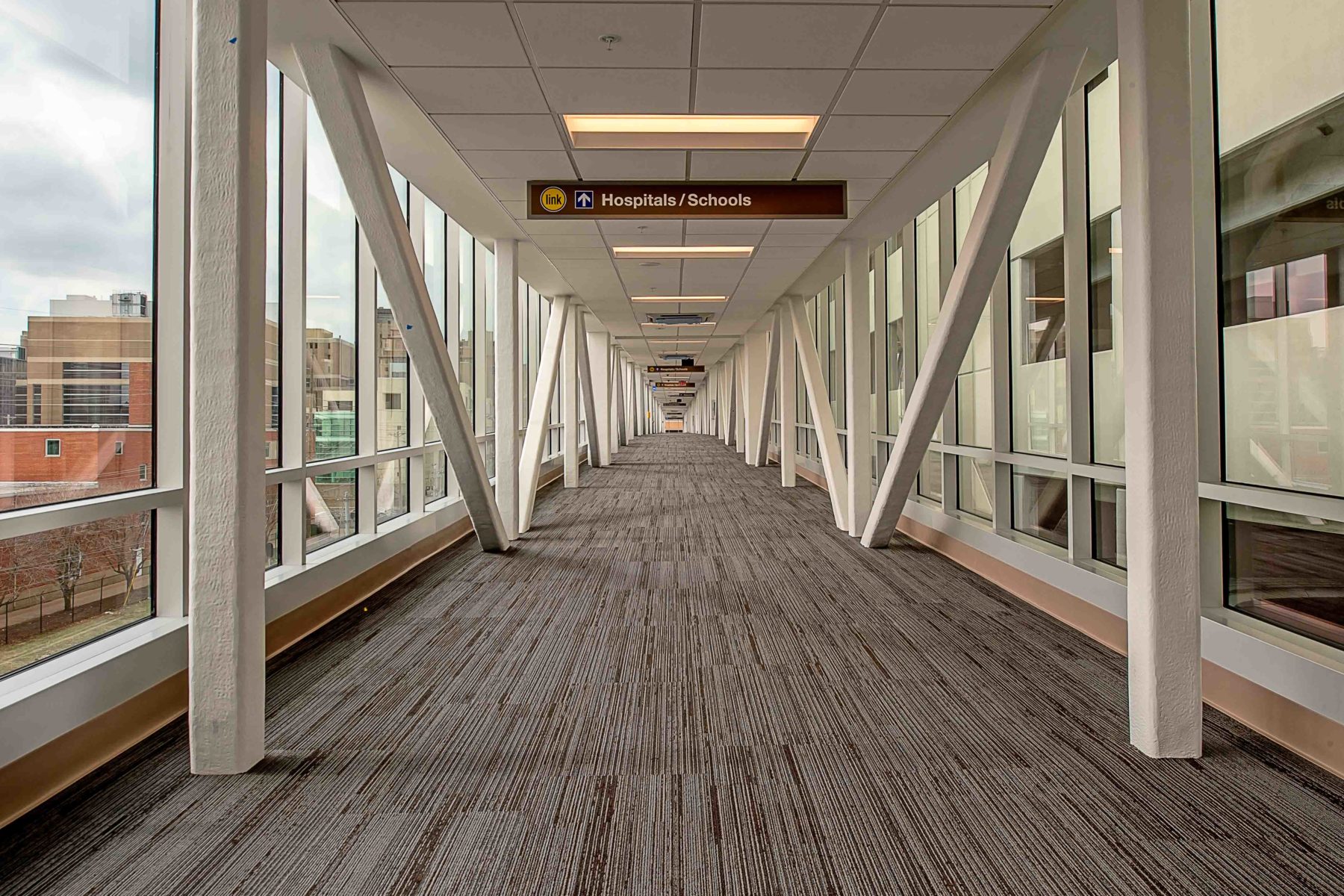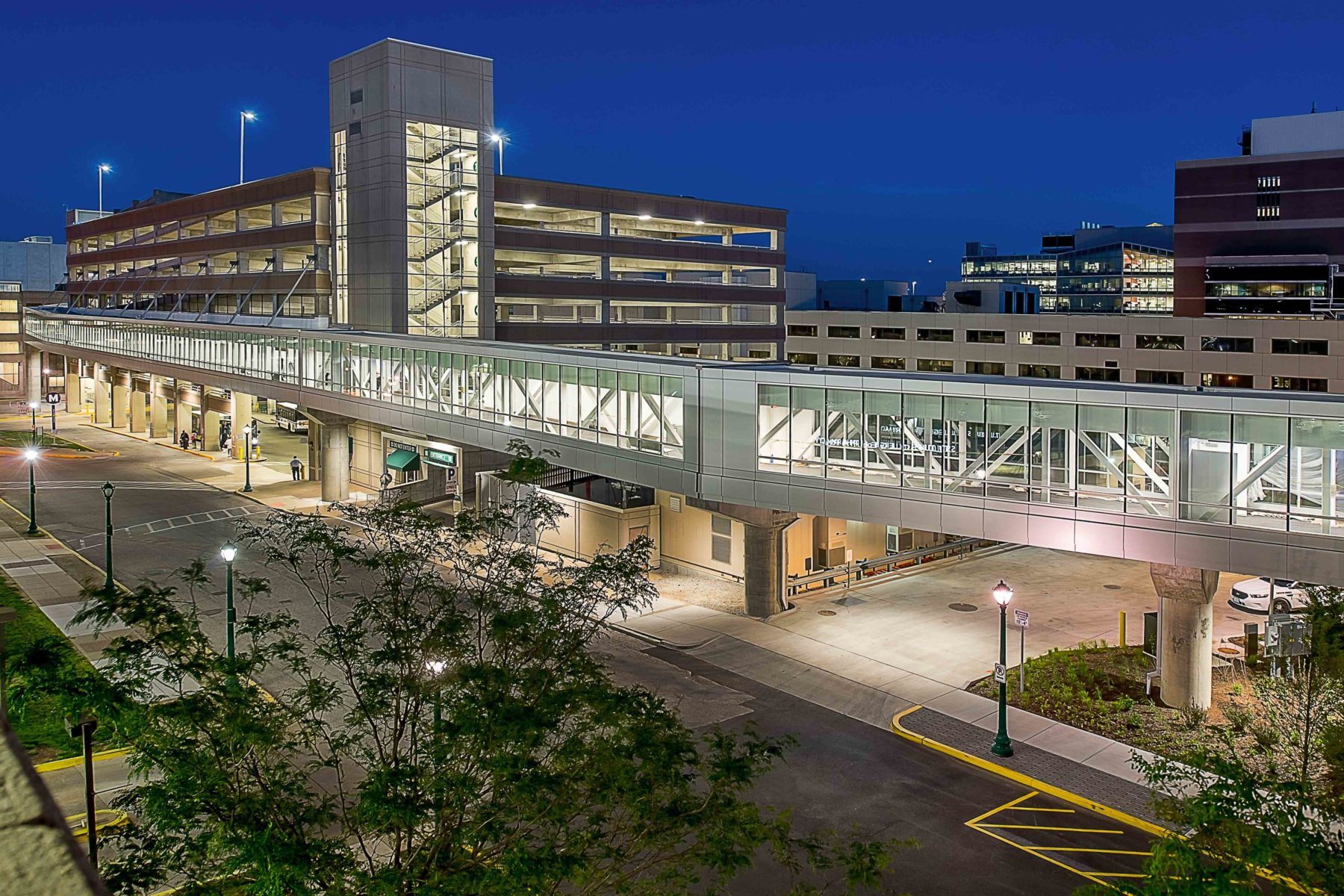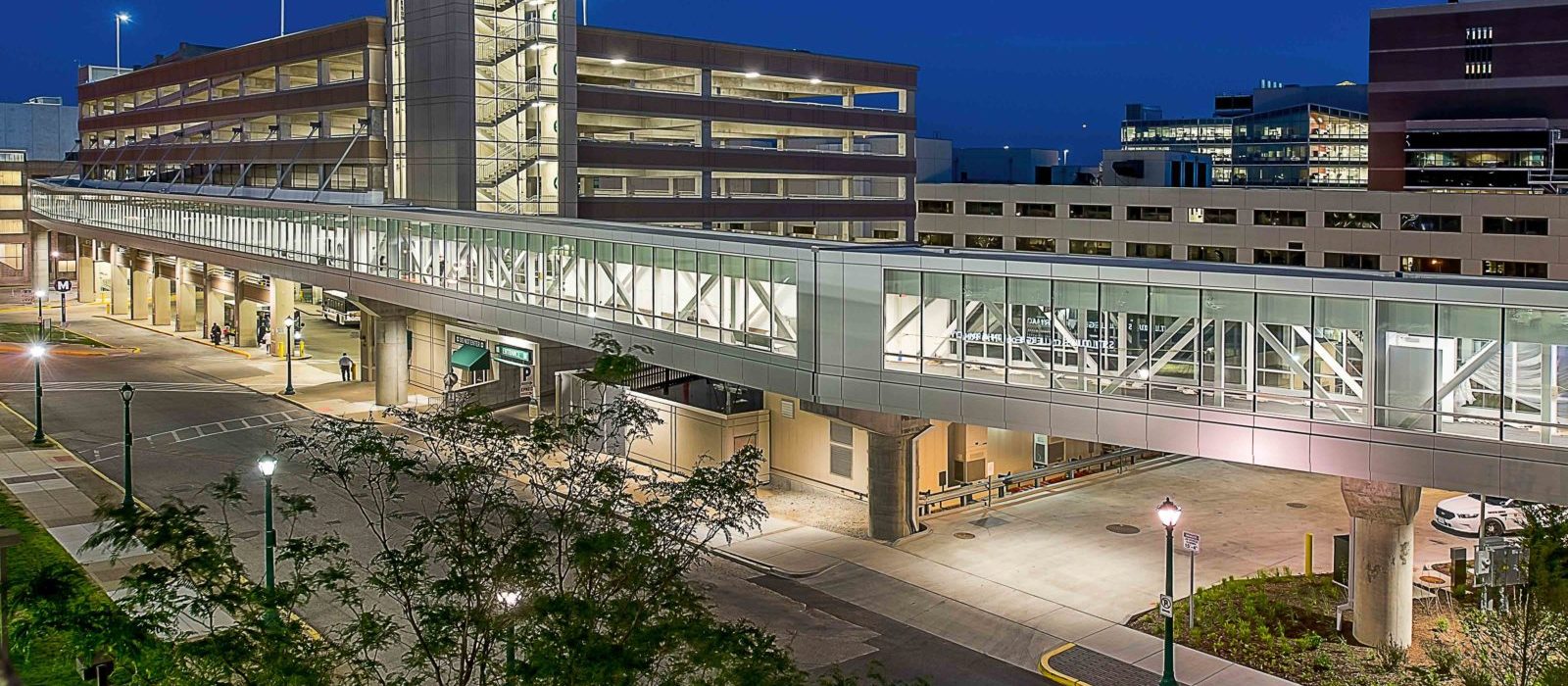
Rethinking Accessibility
“KAI/PARIC, a Joint Venture” recently completed both the design and construction for a 1,200-foot-long, elevated pedestrian skywalk project called the East-West Connector, which connects more than 6,000 parking spaces to the main hospital complex on the BJC HealthCare/Washington University Medical Center campus in St. Louis, MO.
Construction team members from both KAI and PARIC led the project, with KAI also providing its architectural design. The project is a component of the BJC HealthCare/Washington University Medical Center Campus Renewal Project – a long-term project to transform a 16-block campus that includes Barnes-Jewish Hospital, St. Louis Children’s Hospital and the Washington University School of Medicine.
Completed after only 264 construction days, the extensive pedestrian connector is a 13-foot-wide prefabricated steel structural tube clad in glass and architectural sheetmetal that is elevated to heights averaging 40 feet above street level. It starts on the east end at the St. Louis Children’s Hospital staff garage, continues west along the MetroLink right-of-way adjacent to BJC’s new 3,022-space East Garage (also designed and constructed by “KAI/PARIC, a Joint Venture”). The walkway then connects to the Duncan BJC garage on Taylor Avenue, continues across Taylor Avenue to the west and runs alongside the 700-space Metro Parking Garage. The walkway ends at the new 12-story Mid-Campus Center (completed by a joint venture between Clayco and KAI), where it connects to the main elevated walkway near the BJC Institute of Health and Hope Plaza.
- Services
-
Architecture, Design-Build, Construction Services
"By its very nature, design and construction is a series of problems and challenges that need to be solved. Given the unique challenges presented by this project and the many different stakeholders, neighboring facilities, utilities, and streets, we recognize this project as a great success."
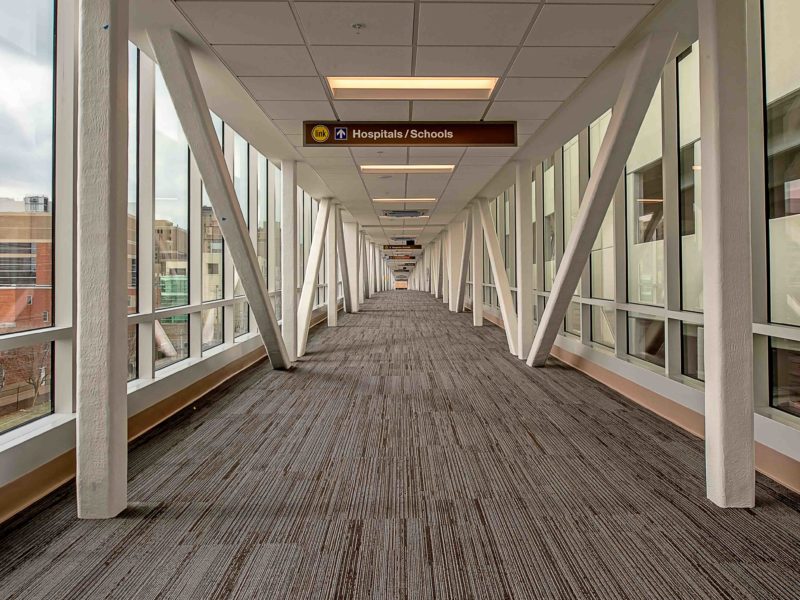
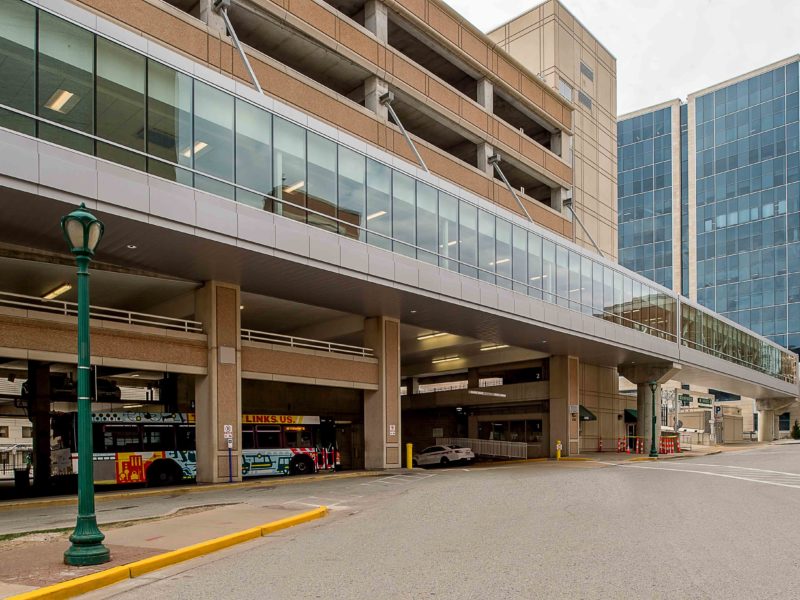
The Impact
Improving Pedestrian Safety & Efficiency
This project serves as a tremendous amenity to medical center staff by improving the quality of life on campus from a comfort, safety, and security perspective. It also relieves a significant amount of pedestrian traffic at one of the busiest intersections on St. Louis.

